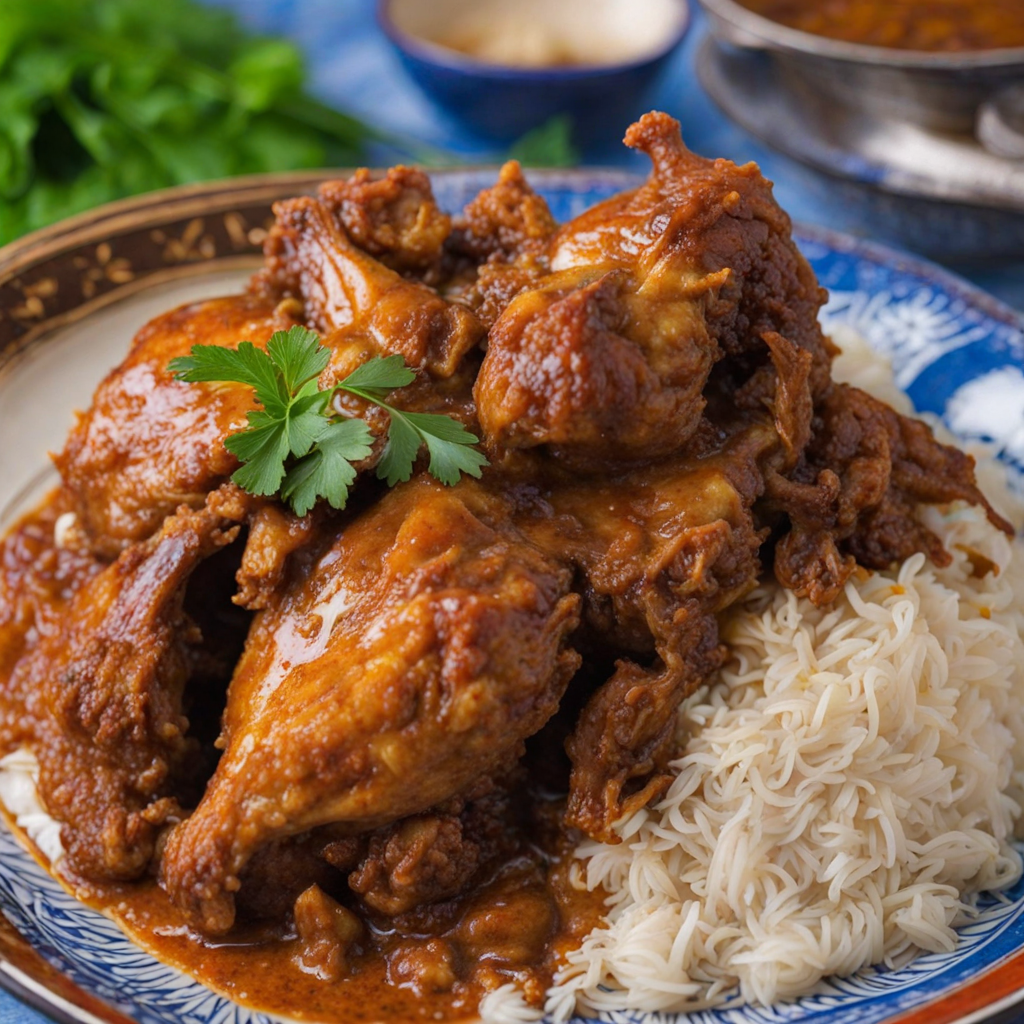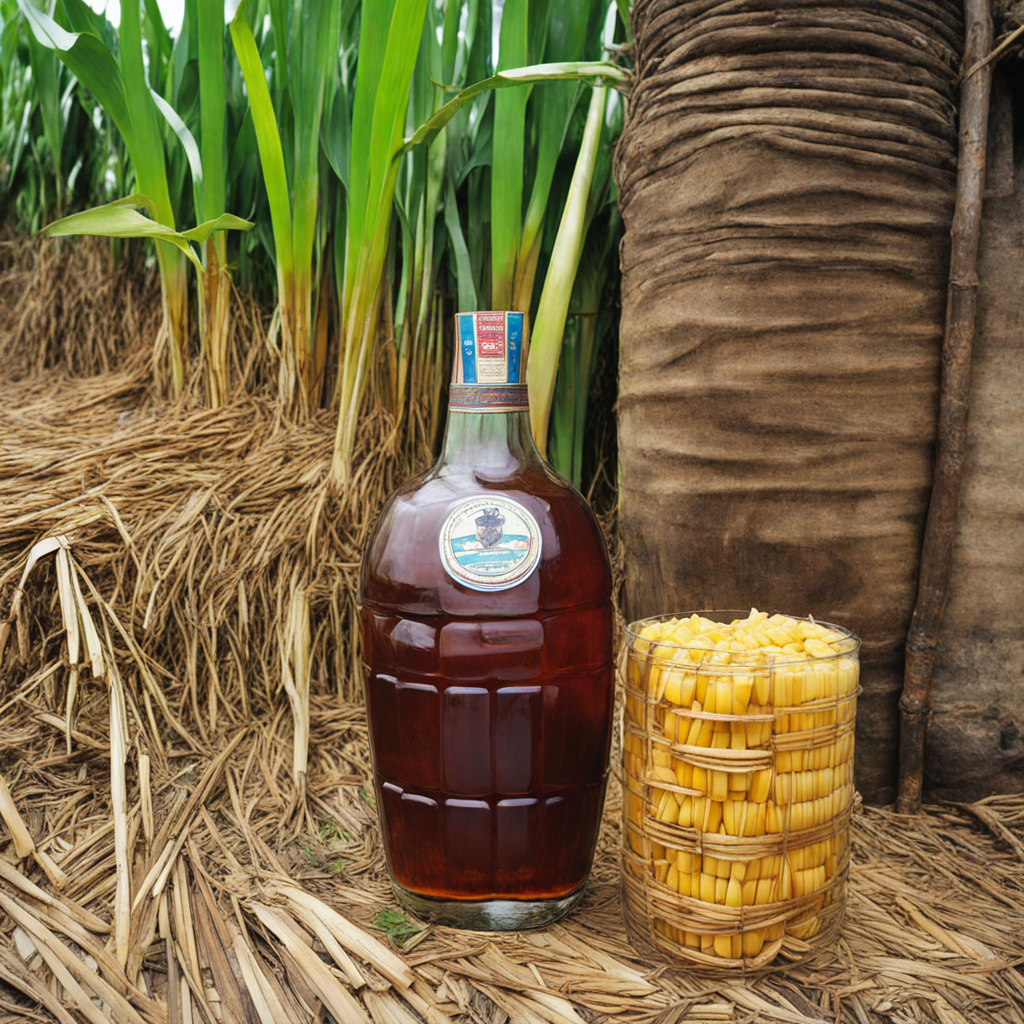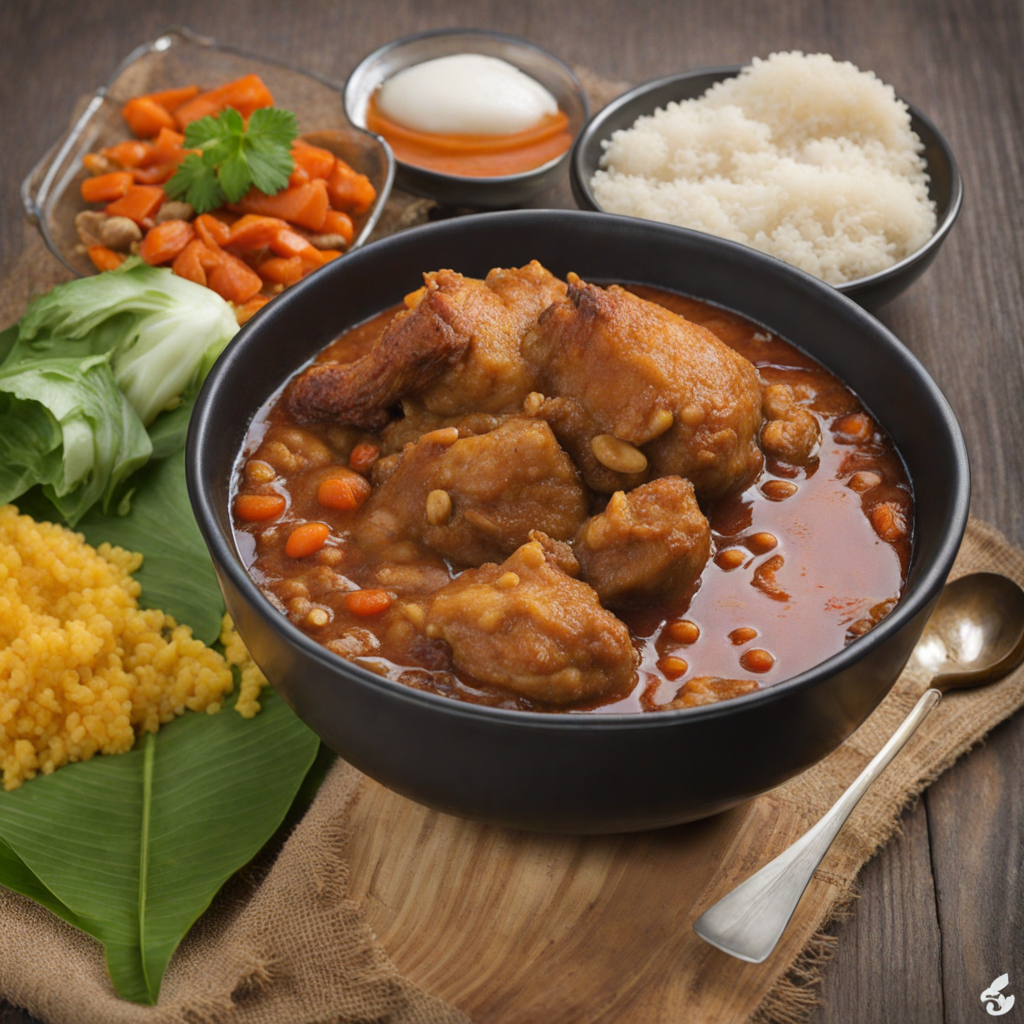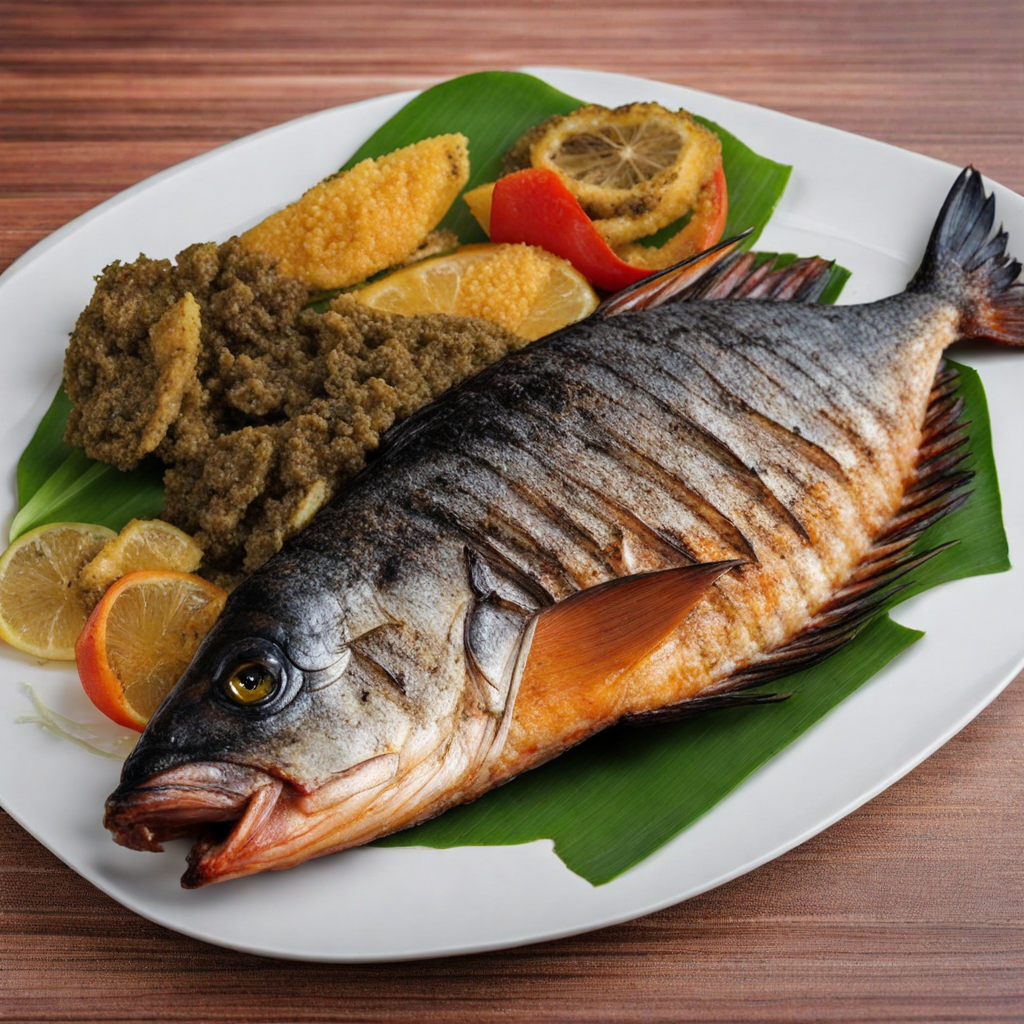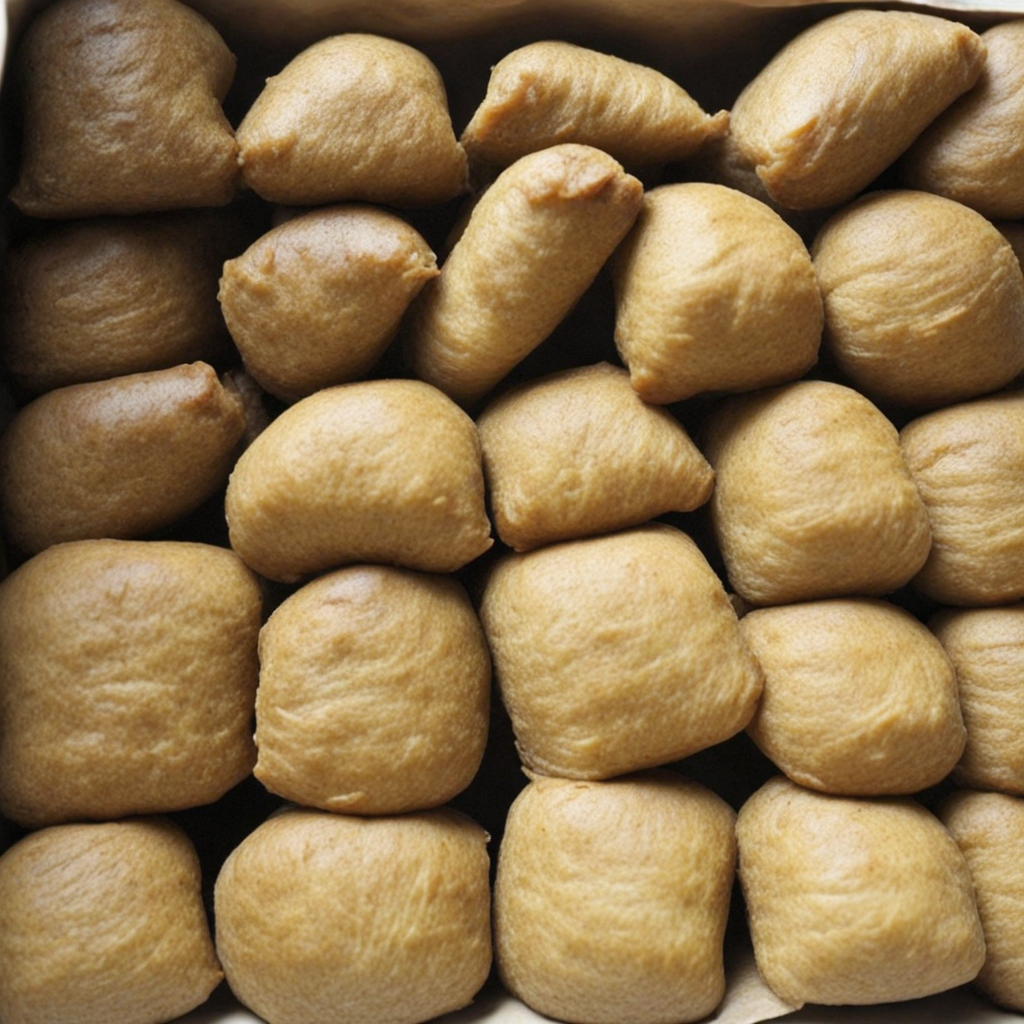Moambe Chicken
Moambe Chicken is a beloved dish hailing from the Democratic Republic of the Congo, celebrated for its rich flavors and comforting ingredients. At its core, the dish features tender chicken pieces simmered in a sumptuous, thick sauce made from palm oil, which adds a unique depth and a hint of sweetness. The sauce is enhanced with the addition of groundnuts, also known as peanuts, which contribute a delightful creaminess and nutty flavor that pairs beautifully with the chicken. Traditional spices and seasonings, including garlic, onions, and sometimes chili, add layers of flavor, making every bite a delightful experience. The preparation of Moambe Chicken is often a communal affair, reflecting the strong cultural ties and family bonds in Congolese cuisine. The chicken is marinated and cooked in the flavorful sauce until it becomes irresistibly tender, allowing the flavors to meld beautifully. Served with a side of starchy accompaniments such as rice, cassava, or fufu, the dish is designed to be hearty and filling, perfect for sharing with loved ones. The balance of flavors and textures – the richness of the sauce, the crunch of groundnuts, and the succulence of the chicken – creates a satisfying meal that resonates with warmth and hospitality. What sets Moambe Chicken apart is not just its taste but also its cultural significance. It is often served during special occasions and gatherings, symbolizing celebration and togetherness. The dish embodies the essence of Congolese cuisine, showcasing the use of local ingredients and traditional cooking methods that have been passed down through generations. For anyone looking to explore new culinary horizons, Moambe Chicken offers a tantalizing glimpse into the flavors and traditions of the Democratic Republic of the Congo, promising an unforgettable dining experience.
How It Became This Dish
Poulet Moambe: A Culinary Journey Through the Heart of the Democratic Republic of the Congo Origins and Ingredients Poulet Moambe, often referred to as the national dish of the Democratic Republic of the Congo (DRC), is a rich and flavorful chicken dish that embodies the vibrancy of Congolese cuisine. The term "moambe" comes from the word for palm oil, which is a key ingredient in this dish. The origins of Poulet Moambe can be traced back to the diverse culinary practices of the various ethnic groups inhabiting the DRC, particularly the Bakongo people of the western region, where palm oil is a staple. Historically, the dish's fundamental elements are rooted in the indigenous practices of the Congolese people. The use of chicken, vegetables, and spices reflects a blend of traditional African culinary practices, local ingredients, and influences brought by colonial encounters, particularly with the Portuguese and Belgian colonizers. The dish typically features chicken that is simmered in a sauce made of palm oil, ground nuts (often peanuts), tomatoes, onions, and a variety of spices, resulting in a rich, aromatic flavor profile that is both hearty and comforting. Cultural Significance Poulet Moambe is more than just a dish; it is a cultural symbol of Congolese identity and hospitality. In the DRC, food serves as a crucial social connector, and Poulet Moambe is often prepared for significant gatherings, celebrations, and communal feasts. Whether it’s a family reunion, a wedding, or a religious festival, the presence of Poulet Moambe signifies abundance and warmth, embodying the spirit of sharing and togetherness. In the DRC, traditional meals often reflect the agricultural bounty of the region. The ingredients used in Poulet Moambe showcase local produce and the importance of subsistence farming in Congolese society. The dish is typically served with a side of fufu (a starchy side made from cassava or plantains), rice, or plantains, allowing diners to enjoy the flavors and textures in harmony. The act of communal dining, where the food is served in a large pot from which everyone helps themselves, reinforces the values of community and solidarity. Colonial Influences and Adaptations The evolution of Poulet Moambe has also been influenced by the complex history of the DRC, particularly during the colonial period. The Belgian colonization of the Congo from the late 19th century to the mid-20th century introduced new agricultural practices, crops, and cooking techniques. As a result, the dish began to incorporate ingredients previously less common in Congolese kitchens, such as tomatoes and spices that were introduced through trade routes connecting Africa to Europe. The introduction of peanuts, which are now a staple in the sauce, is particularly noteworthy. Originally from South America, peanuts were brought to Africa by European traders and became widely cultivated in the region. Their incorporation into Poulet Moambe represents not only an adaptation of the dish but also a reflection of the broader culinary exchanges that occurred during this period. As the DRC gained independence in 1960, there was a renewed interest in reclaiming and celebrating indigenous culinary traditions, including Poulet Moambe. This renaissance sought to emphasize the pride in Congolese culture and to distance the nation from its colonial past. As a result, Poulet Moambe has become a symbol of national identity, embodying the resilience and richness of Congolese heritage. Modern Variations and Global Recognition In contemporary times, Poulet Moambe has transcended its traditional roots, finding recognition and appreciation beyond the borders of the DRC. The dish has gained popularity in global cuisine, especially within African diaspora communities, where it is celebrated for its depth of flavor and cultural significance. Restaurants serving Congolese and broader Central African cuisines have started to feature Poulet Moambe, showcasing its appeal to a wider audience. Modern variations of Poulet Moambe often reflect regional adaptations, incorporating different spices or cooking methods based on local availability and preferences. Chefs may experiment with ingredients such as coconut milk or different types of nuts, creating diverse interpretations while maintaining the dish's essence. This adaptability speaks to the resilience of Congolese cuisine, allowing it to evolve while remaining deeply rooted in its cultural heritage. The global foodie movement has also led to a renewed interest in traditional dishes like Poulet Moambe, as chefs and home cooks seek authentic culinary experiences. The rise of social media platforms has facilitated the sharing of recipes and cooking techniques, allowing food enthusiasts around the world to learn about and recreate Poulet Moambe in their own kitchens. This exchange of culinary knowledge serves to enrich the global appreciation for Congolese cuisine and its vibrant history. Conclusion: A Dish of Heritage and Identity Poulet Moambe is more than just a meal; it is a testament to the rich tapestry of Congolese culture and history. From its indigenous roots and cultural significance to its adaptations and global recognition, the dish represents the resilience and creativity of the Congolese people. It embodies the spirit of community, reflecting the importance of sharing food and stories in forging connections among individuals. As the DRC continues to navigate the complexities of modernity while honoring its past, Poulet Moambe stands as a culinary emblem of its identity. It invites those who partake in it to savor not only the flavors but also the rich history and cultural narratives woven into every bite. In a world that often seeks to categorize and simplify, Poulet Moambe reminds us of the beauty and complexity of food as a reflection of human experience, serving as a bridge between tradition and innovation, and connecting people across time and space.
You may like
Discover local flavors from Democratic Republic Of The Congo



